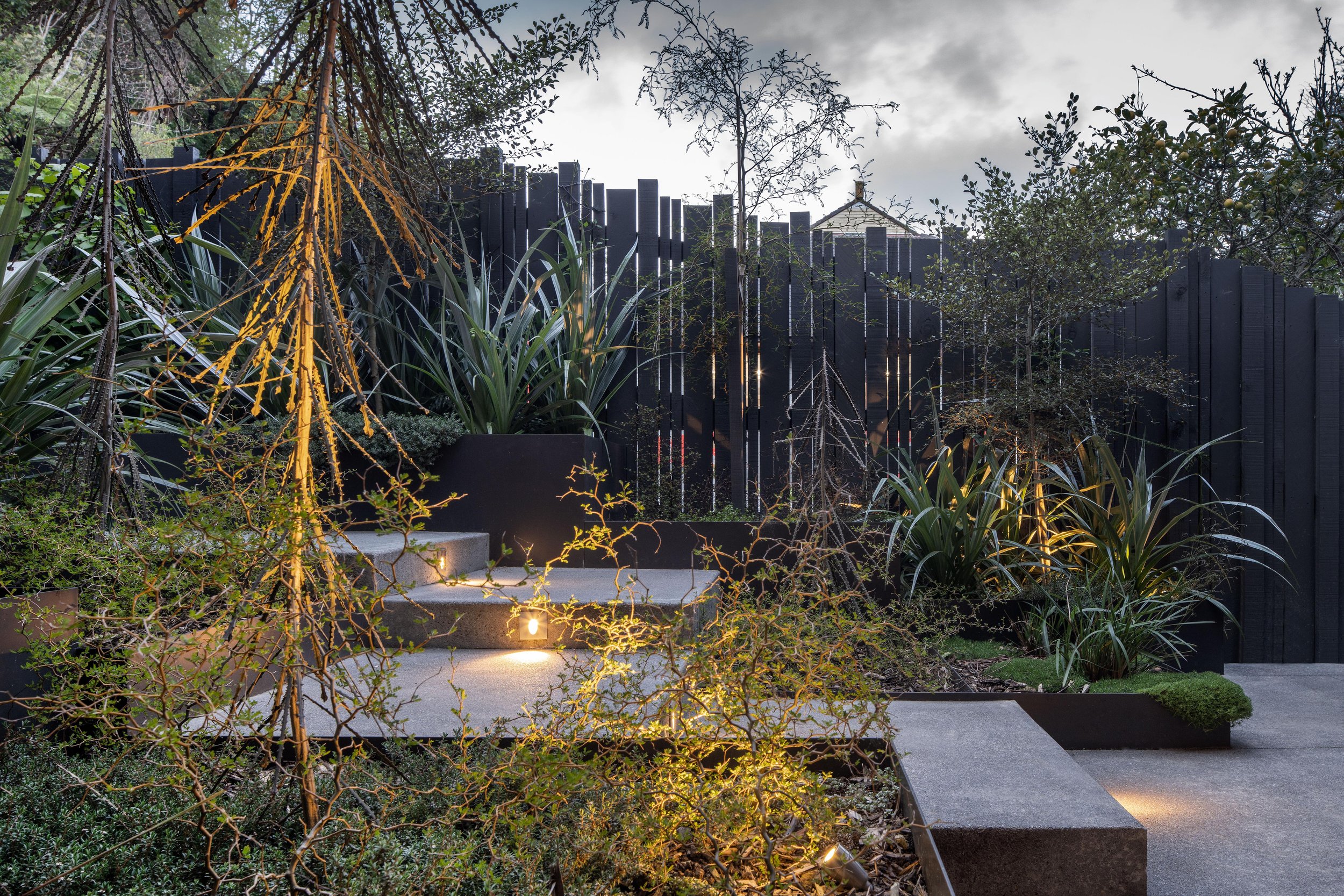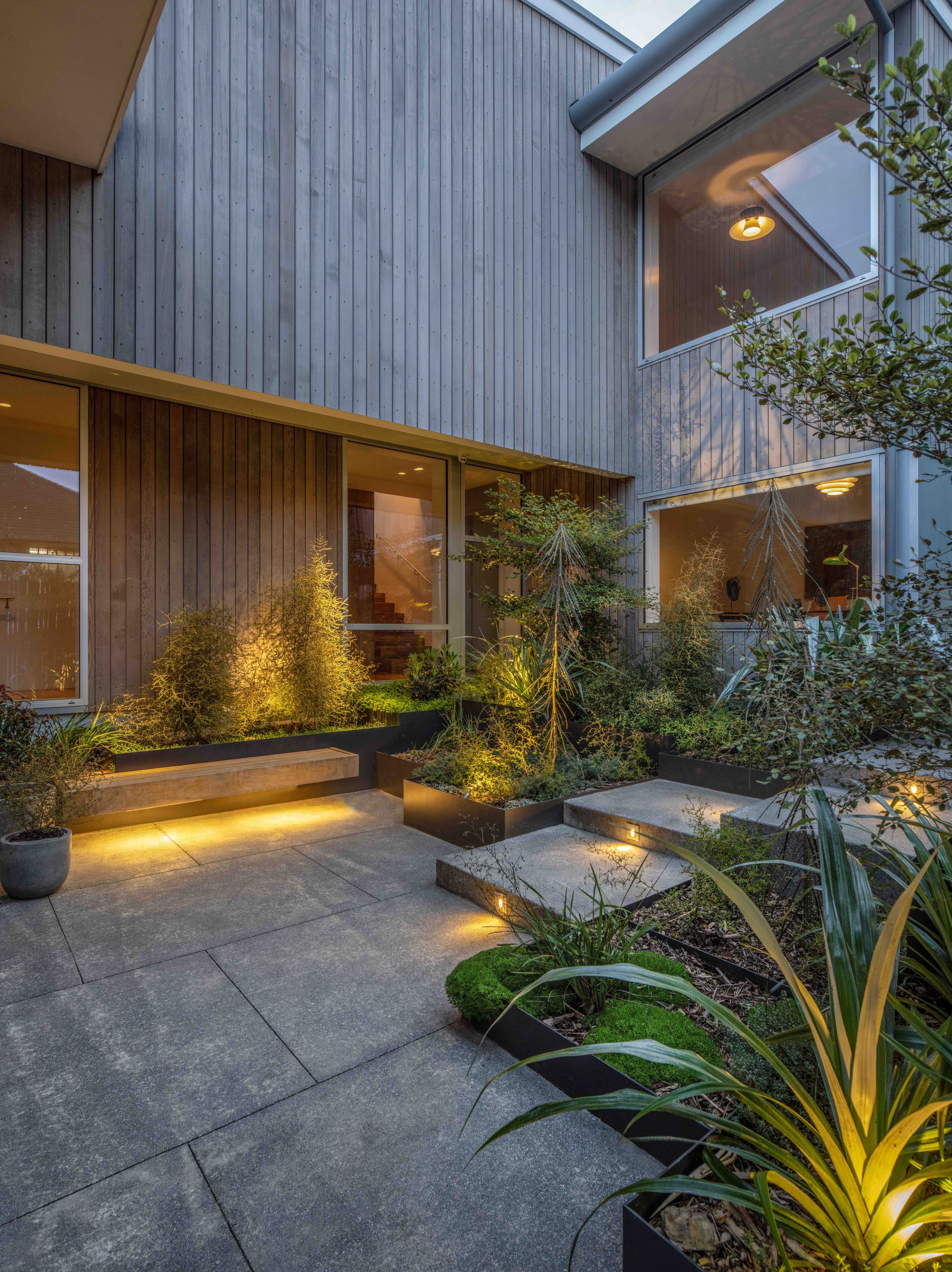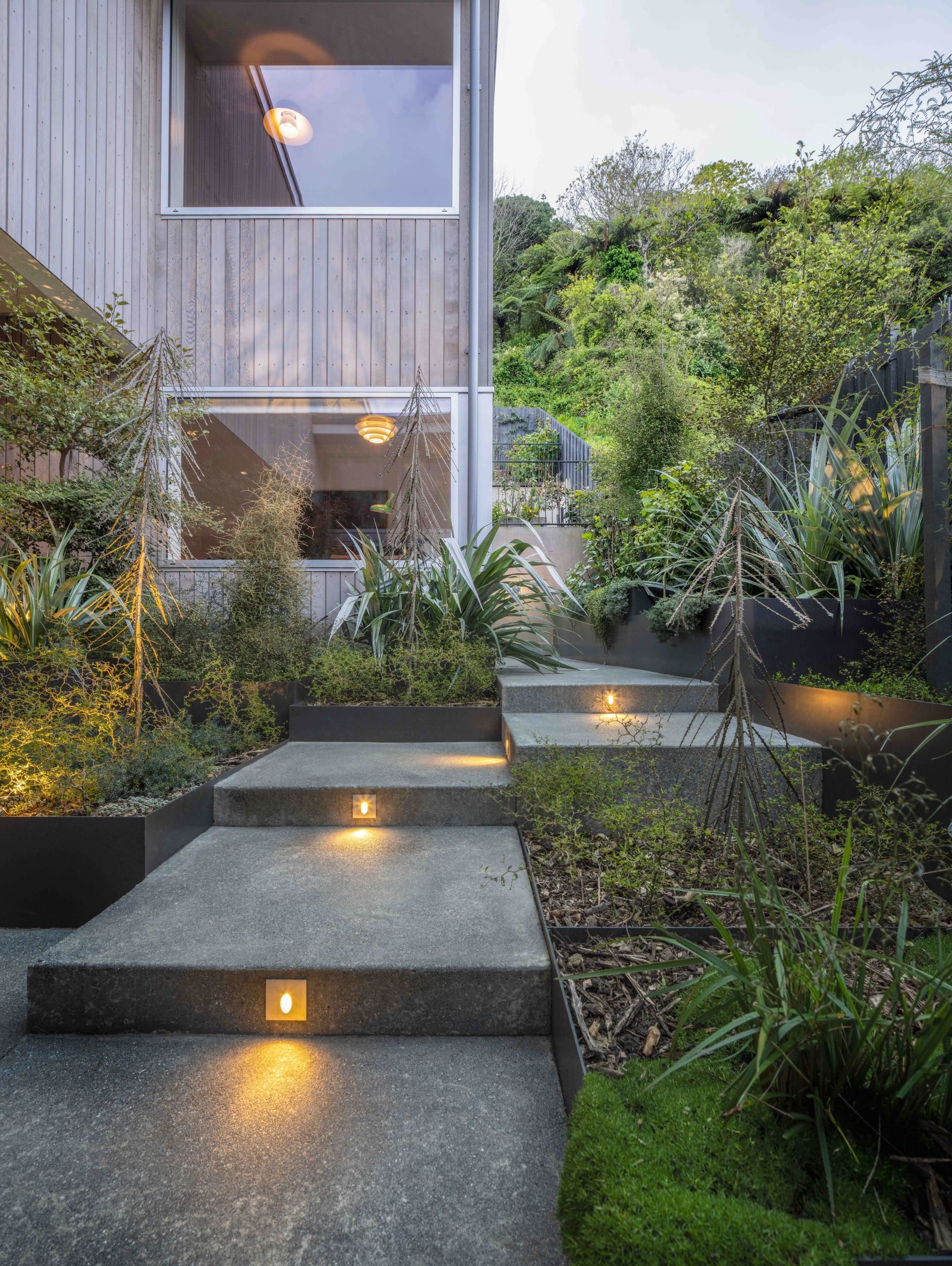Te Whare Mara - the Garden House
Te Whare Mara is an innovative residential project in Te Whanganui-a-Tara Wellington by the Local Landscape Collective’s Mark Newdick and named for the property’s view of the Botanic Gardens and the design’s emphasis on indigenous flora and landform.
He says the garden, which was completed in 2020, takes inspiration from another of his works in the capital, the Webb Street Garden which won the NZILA award for small projects in 2017.
Te Whare Mara in Te Whanganui-a-Tara Wellington by the Local Landscape Collective’s Mark Newdick. All images credited to Andy Spain.
Mark says Te Whare Mara’s layered courtyard provides a sheltered and private centrepiece “around which the house is wrapped to provide pleasant carefully manipulate the views from its most important spaces. Stepped steel, concrete and timber elements navigate the hilly site to provide a consistent but flexible design language aesthetic which is able to respond to the various needs of each space, not least steep the terrain.”
He says the boundary treatments were carefully considered to blend in with the “borrowed landscape” beyond or to screen unwanted views.
The garden takes inspiration from another Mark Newdick’s Webb Street Garden design which won an NZILA award for small projects in 2017.
The planting exploits a wide range of textures and colours to celebrate and promote our indigenous landscape and identity. Small divaricating trees and shrubs are used to provide fine, delicate textures which contrast with the bolder strappy planting.
Ground covers alternate with the stepped ground plane, while small trees and lancewoods play with the verticality of the house and terrain. The eye is led up over fencing to foster a connection with the borrowed landscape of the forest and sky beyond.
Te Whare Mara is named for the property’s view of the Botanic Gardens and the design’s emphasis on indigenous flora and landform.
The fencing has been carefully designed to be both elegant and recessive to ensure the garden in front takes centre stage. Palings of varying height, depth and thickness blend in with the planting to create a seamless transition from the inner garden to the bush clad hills beyond, while providing a shadow-play at certain times of the day and smooth the transition between flat and sloping areas of the site. Both side yards are protected by bespoke perforated powder-coated steel sliding gates to minimise footprint and create continuity with the steel planters.
At night, the courtyard takes on a new life with carefully planned lighting integrated under benches, in steps, up-lighted plants, and against walls. This not only showcases the garden but introduces a shadow play on the house and engages with the interior lighting to provide myriad gradients between indoor and out.
Mark says the project brief was to develop a comprehensive landscape treatment around the home which related strongly to the existing and proposed architecture and the site’s indigenous landscape context. The client wanted, he says, a visionary landscape treatment for the courtyard to provide both an attractive outlook from the house and a sophisticated representation of contemporary landscape architecture in Aotearoa.
He says they also wanted him to consider how the courtyard physically, visually, and conceptually connects with other parts of the garden and the landscape context beyond and to develop boundary treatment around the whole property to provide privacy, shelter without unnecessarily affecting views or sunlight access. They also wanted the planting throughout the garden to be bold, textural and lush.
The clients also wanted the first level of the upper garden to be developed into a utility area with a workshop / shed, herb harden and washing line and the upper garden area to include a food production area with raised vegetable beds and an orchard.
Mark feels the finished project is “a sophisticated representation of contemporary Landscape Architecture in Aotearoa.”





